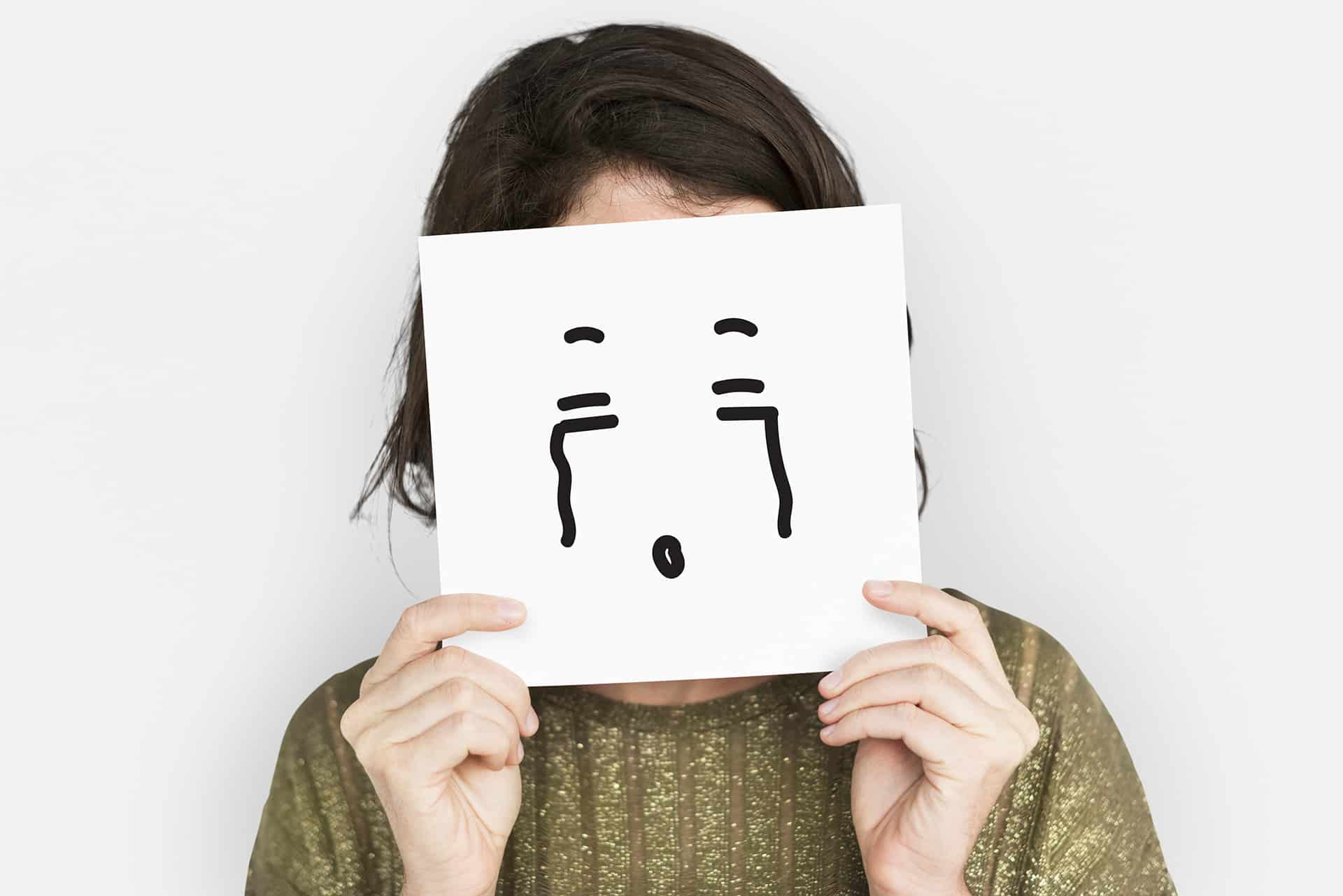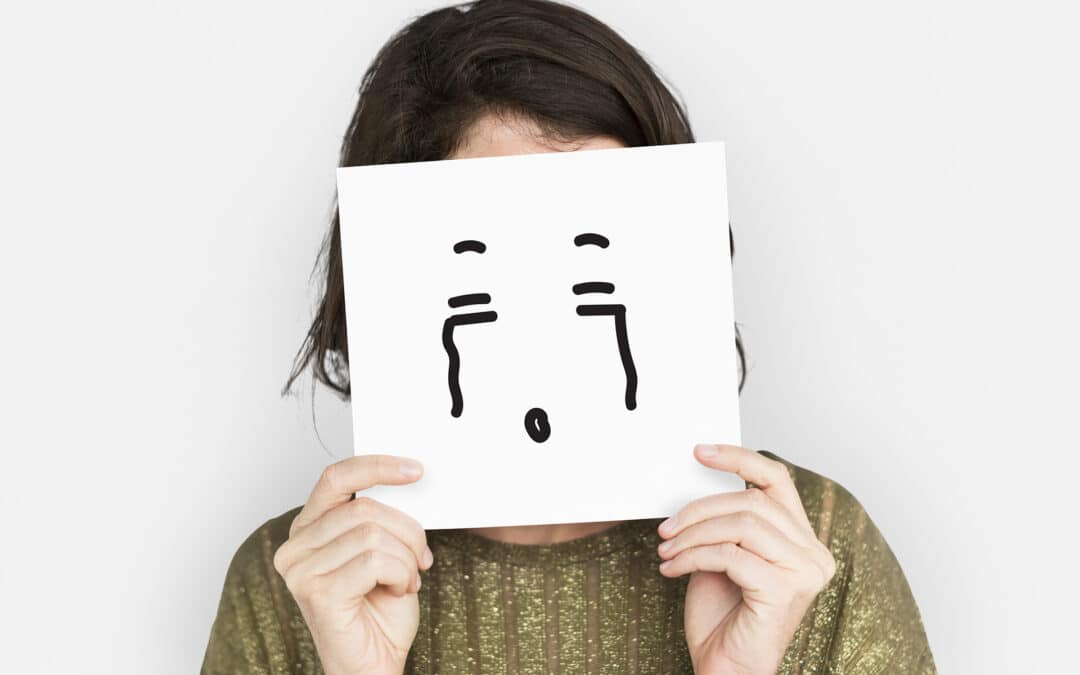
When Your Brain Makes You Cry Over Things That Never Happened
Ever gotten mad, anxious, or cried over something that only happened in your imagination? Same. So, what came first – the thought or the feeling? Here’s the twist: both are possible. But there’s actually something that starts even before those two show up: The sensation. That tiny body cue. The knot in your stomach. The tight chest. The heat in your face.
Here’s why: our brains have one main job — prediction. They’re constantly scanning for patterns and memorizing experiences so they can protect us from future harm.
Why Your Brain Predicts Before You Even Think
Before you have a thought or a feeling, your brain has already made a prediction. That’s its main job: guess what’s about to happen, based on past experience, and prep your body to survive it. This is known as predictive processing.
Your brain isn’t waiting for the world to happen — it’s actively constructing it, moment by moment. When you walk into a room and your stomach tightens before anything even happens, that’s not random. It’s your brain going: “Last time we were here, something felt off — better brace ourselves.”
The wild part? Your brain actually sends more information from inside you to your senses (what’s called interoception) than it receives from the outside world. So that tight chest, that clench in your jaw, that buzzing nervous energy? That’s your brain making educated guesses based on your past — not always your present.
“The brain is not a passive organ that reacts to the world. It is an active organ that predicts what will happen next.”
— Dr. Lisa Feldman Barrett, How Emotions Are Made (2017)
Why does this matter?
Because it means that when you spiral into upset from “nothing,” your brain isn’t broken. It’s doing exactly what it was designed to do. Only now, it’s reacting to old info that doesn’t always match your current reality. This built-in alarm system is the reason our ancestors ran from bears and avoided poisonous berries. It kept us alive. And it still does. You’re still supposed to run from bears. (Or play dead – depends on the bear.)
But here’s the modern twist:
Today, our “bear” is often a passive-aggressive email. A tone of voice. A flashback. A story we tell ourselves at 2 am.
Our brains? They can’t always tell the difference between real danger and imagined threat. The body reacts either way.
But here’s the cool part: Just like our thoughts can spiral us into panic, they can also pull us back into clarity.
Reframing: Decorating Your Thought Gallery
Let’s talk about one of my favorite tools from cognitive behavioral therapy: Reframing.
Reframing isn’t new – legends like Dr. Aaron T. Beck, Milton Erickson, Gregory Bateson, and Virginia Satir have been using it for decades to help people shift perspective and reclaim emotional power.
It’s exactly what it sounds like. You take a thought that feels sharp, heavy, or hopeless – and you try a different frame. Not to dismiss it. Not to gaslight yourself. Just to shift perspective. Like holding a picture up to the light and noticing something new. Throw away that old, rusty frame you’ve been using to perceive it until now. It’s possible to re-decorate your thought gallery to your wishes.
Here’s how it works:
Sometimes, a simple shift from “I’m failing” to “I’m learning,” or the addition of three tiny letters – yet – can transform “I’m such a failure and I just can’t do this” into “I can’t do it yet, but I’m still learning.”
Ugh, the relief I feel just by typing out those words. That word? Yet? Such a game-changer. Suddenly, there’s space. There’s time. There’s potential. It moves the thought from “end of story” to “work in progress.”
Your Thoughts Shape Your Reality — Choose Your Frames
This isn’t about pretending everything’s fine. It’s about remembering you have more than one frame to hang your thoughts in. So the next time your mind starts spinning – pause. Take a step back. Look at the whole wall.
Is this the only frame you can use? What else might belong in this gallery? Can you add some “yet” stickers to the frame?
Because even when your nervous system sounds the alarm, you’re still the curator of your inner gallery. You get to decide what stays, what shifts — and what gets reframed.
References
Barrett, L. F. (2017). How Emotions Are Made: The Secret Life of the Brain. Houghton Mifflin Harcourt.
Beck, J. S. (2011). Cognitive Behavior Therapy: Basics and Beyond (2nd ed.). Guilford Press.
Nave, K. (2020). Wilding the predictive brain. Wiley Interdisciplinary Reviews: Cognitive Science, 11(6).
Quadt, L., Garfinkel, S. N., & Critchley, H. D. (2018). Interoception and emotion: Shared mechanisms and clinical implications. Annual Review of Clinical Psychology, 14, 113–137.
